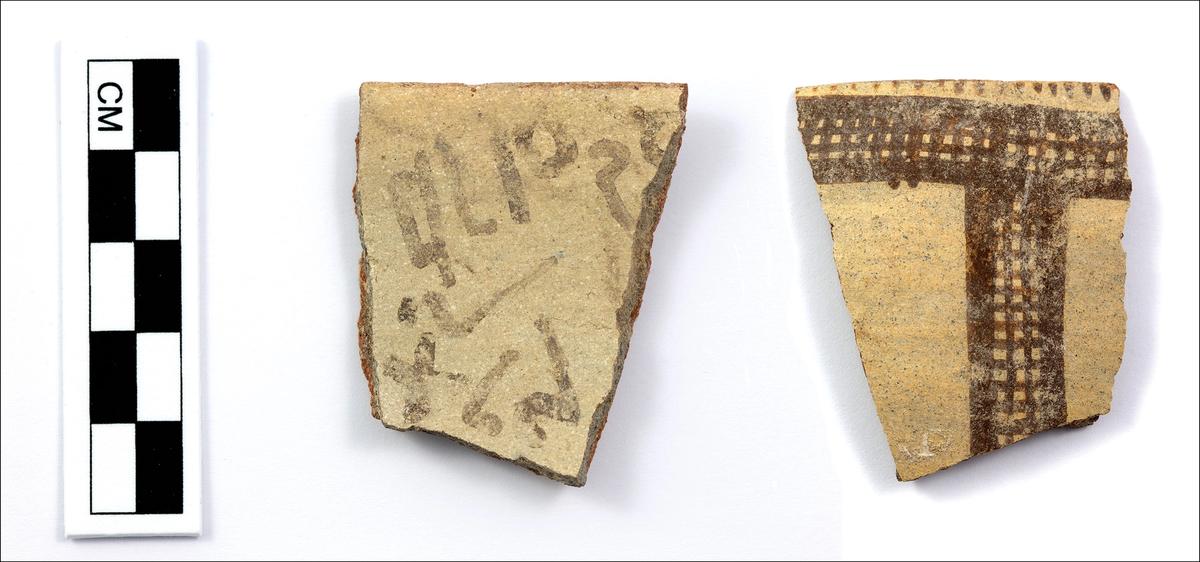Words found written in ink on a broken pottery sherd from Tel Lachish, Israel, represent a “missing link” in the history of the alphabet, write researchers in the journal Antiquity. Though the writing is difficult to translate due to the text being broken, one word appears to spell out “slave,” a common element of people’s names, normally combined with the name of a god; while another seems to say “honey” or “nectar,” or is possibly derived from the word “to turn.”
“The newly discovered inscription from Tel Lachish is currently the earliest securely dated example of early alphabetic writing in the Southern Levant,” write the researchers in the article. It was found during excavations conducted by the Austrian Archaeological Institute in 2018.
The alphabet is thought to have been developed by Levantine miners working in the Sinai, Egypt, in around 1800 BC, who were inspired by Egyptian hieroglyphs to create their symbols. The recently discovered pottery sherd dates to around 1450 BC, a time when some letters still appear like hieroglyphs, including a round symbol similar to an eye’s iris without a pupil, a door, a horned viper, and a house. It helps to fill a gap in the alphabet’s history, as few examples are found between 1800 BC and 1300 BC.
Scholars had previously argued that the alphabet was only widely adopted in the Levant during the 14th or 13th century BC, when Egypt controlled the region. Now though, the researcher team suggests that the alphabet spread earlier, probably during the time of the Hyksos—kings of Levantine origin who ruled northern Egypt from around 1650 to 1550 BC.
Once the alphabet arrived in the Levant, the Phoenicians adopted and adapted it, and spread its use across the Mediterranean world, ultimately leading to the creation of the Greek and Latin alphabets.


